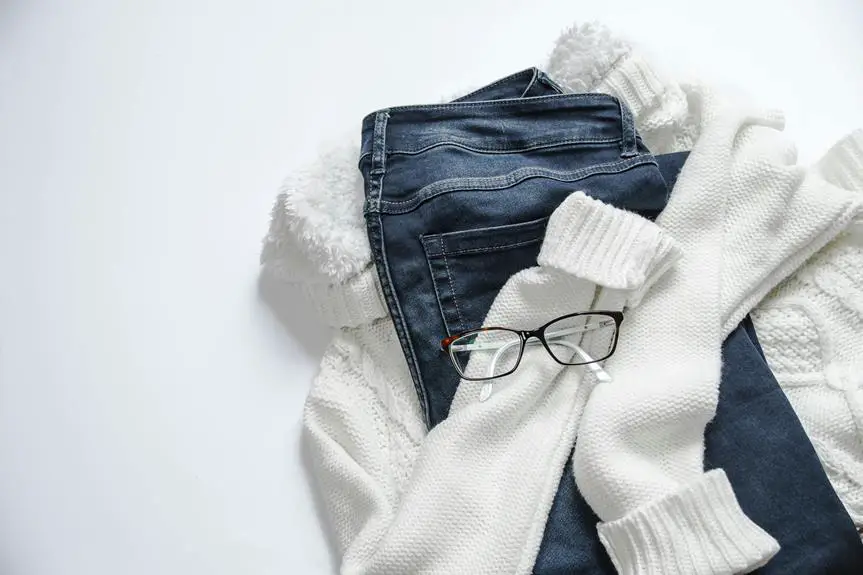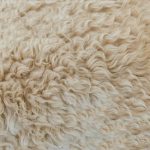When you consider microfleece for outdoor activities, you might wonder how well it protects against UV radiation. While it does offer some degree of protection, the effectiveness largely depends on factors like fabric density and color. You'll find that wearing a lighter or wet microfleece can diminish this protection significantly. To truly understand how to make the most of microfleece in sun exposure, it's important to explore which characteristics to prioritize and how they compare to other materials. What strategies can you implement to enhance your sun safety?
Table of Contents
Understanding UV Radiation
You often encounter UV radiation from the sun, which can pose risks to your skin and health. This radiation exists in two primary forms: UVA and UVB. While UVA rays penetrate deeply, contributing to skin aging and cancer, UVB rays are responsible for sunburn and other acute skin reactions.
Understanding these different types of UV radiation is crucial in protecting yourself.
When you're outdoors, especially during peak sun hours, your skin absorbs these harmful rays. It's essential to remember that even on cloudy days, up to 80% of UV rays can still reach you, increasing your risk of sun damage.
Without proper protection, prolonged exposure may lead to serious health issues, including skin cancer.
To safeguard yourself, you can use various strategies, such as wearing sunscreen with a high SPF and protective clothing.
Keeping these precautions in mind will help minimize your exposure to harmful UV radiation. As you think about your sun safety strategy, remember that staying hydrated and seeking shade can also play a significant role.
Microfleece Fabric Characteristics
Microfleece fabric, known for its lightweight and soft texture, offers excellent insulation and breathability for outdoor wear. You'll appreciate how it keeps you warm without weighing you down, making it ideal for layering.
The fabric is crafted from polyester fibers, which give it that plush feel while ensuring it's quick-drying and moisture-wicking. This means when you sweat, it'll pull moisture away from your skin, keeping you dry and comfortable during your activities.
Durability is another strong point of microfleece. You can easily toss it in the washing machine without worrying about wear and tear, maintaining its shape and softness over time.
Its versatility is impressive too; you can find it in various weights, allowing you to choose a thickness that fits your climate and personal preference.
Additionally, many microfleece fabrics feature anti-pill technology, so you won't have to deal with that annoying fuzz that occurs with some types of fleece.
Whether you're hiking, camping, or just enjoying a cool evening outside, you'll find that microfleece is an excellent choice for staying cozy and comfortable. Its unique characteristics make it a staple in outdoor apparel.
UV Protection Ratings Explained
Understanding UV protection ratings is important when selecting outdoor apparel, especially since microfleece can provide additional benefits beyond just warmth and comfort. UV protection is typically measured using the Ultraviolet Protection Factor (UPF) rating, which indicates how effectively a fabric blocks UV radiation. The higher the UPF rating, the better the protection. For example, a fabric with a UPF of 50 blocks about 98% of the sun's harmful rays, while a UPF of 30 blocks approximately 97%.
When you choose clothing, look for materials that offer a UPF rating of 30 or higher for good protection. It's essential to remember that the fit, color, and texture of the fabric can also impact UV protection. Loose-fitting clothes may allow more rays to reach your skin, while darker colors often absorb more UV radiation compared to lighter shades.
Microfleece typically falls in the moderate UPF range, depending on the weave and thickness. So, while it keeps you warm, it's wise to layer with other UV-blocking garments or apply sunscreen on exposed skin. By understanding UV ratings, you'll make better decisions for sun safety during outdoor activities.
Microfleece Vs. Other Fabrics
When comparing microfleece to other fabrics, it stands out for its unique combination of warmth, lightweight feel, and moderate UV protection. Unlike heavier materials, microfleece keeps you cozy without weighing you down, making it ideal for outdoor activities.
You'll find that its soft texture isn't just comfortable against your skin, but it can also provide decent protection against harmful UV rays, especially when layered properly.
In comparison to cotton, which offers minimal UV defense, microfleece gives you a better shield while still being breathable. Meanwhile, synthetic fabrics like polyester can provide higher UV resistance, but they often lack the same level of insulation that microfleece boasts.
Nylon is another contender; while it may offer excellent UV protection, it tends to feel less comfortable and can be less flexible. If you prioritize comfort and warmth during your outdoor adventures, microfleece is hard to beat.
It effectively balances protection and comfort, making it a solid choice for anyone looking to enjoy the sun while remaining warm and cozy.
Factors Affecting UV Protection
When it comes to UV protection, several factors come into play that you should consider. Fabric density, color, and moisture levels all impact how well microfleece shields you from harmful rays.
Understanding these elements will help you make informed choices for your outdoor gear.
Fabric Density Impact
The density of the microfleece fabric directly influences its ability to block harmful UV rays, ensuring better protection during outdoor activities. When you choose a denser microfleece, you're essentially opting for a fabric that's woven tighter, reducing the spaces through which UV rays can penetrate. This means you'll have greater coverage against potential skin damage caused by prolonged sun exposure.
In contrast, if you go for a lighter or looser microfleece, you may not get the same level of UV protection. The gaps in the fabric allow more sunlight to reach your skin, which defeats the purpose of wearing UV-protective clothing. So, if you're planning a day spent outside, it's crucial to consider the fabric's density.
Keep in mind that denser fabrics can also feel different against your skin; they might be warmer or heavier. However, this trade-off can be worth it for the enhanced UV protection. Always check the UPF rating if you want to ensure the microfleece meets your outdoor needs. Prioritize fabrics that balance comfort with good density, so you stay both safe from the sun and comfortable while enjoying the great outdoors.
Color and UV Absorption
Color plays a significant role in how well microfleece absorbs UV rays, affecting your overall protection during outdoor activities. Darker colors generally absorb more UV radiation, which means they offer better protection than lighter shades. If you're planning a day out in the sun, choosing your microfleece wisely can make a difference.
Here's a quick comparison of color impact on UV absorption:
| Color | UV Absorption Level |
|---|---|
| Black | High |
| Navy Blue | Moderate |
| Light Gray | Low |
For instance, wearing a black microfleece can significantly lower the amount of UV radiation that reaches your skin compared to sporting a light gray version. So, when you're shopping for microfleece, consider your color choices carefully. Not only does the color affect style, but it also directly impacts your sun protection. Remember, every little detail counts when it comes to shielding yourself from harmful UV rays. Embrace darker colors for enhanced safety during those sunny adventures!
Moisture and Performance Effects
Moisture content in microfleece can significantly influence its ability to protect you from UV rays, affecting both comfort and performance during outdoor activities. When microfleece becomes damp from sweat or external moisture, its structure can change, potentially reducing the fabric's protective qualities against UV radiation. Wet fabrics often allow more UV rays to penetrate, meaning you may be more exposed than you'd expect.
Additionally, high moisture levels can lead to increased friction and discomfort, distracting you from enjoying your outdoor adventure. If you're engaging in high-energy activities, the sweat your body produces can create a cycle: the more you sweat, the less effective the fabric is in providing UV protection.
To maximize the benefits of microfleece, it's essential to keep it dry. Consider layering it with moisture-wicking materials that draw sweat away from the skin, thereby maintaining the microfleece's integrity and performance. Also, look for microfleece options specifically designed with moisture management features. By paying attention to moisture control, you'll ensure that your microfleece garment not only keeps you comfortable but also offers the UV protection you need during your time outdoors.
Care Tips for Maximizing Performance
To keep your microfleece performing at its best, regularly follow proper washing and drying techniques. Always check the care label before washing, as different microfleece products may have specific instructions. Use cold or warm water and a gentle detergent to maintain the fabric's integrity. Avoid bleach and fabric softeners, as these can diminish its moisture-wicking and UV protection properties.
When it comes to drying, skip the high heat, as it can lead to shrinkage and damage. Instead, air-dry your microfleece by laying it flat or hanging it up. If you choose to use a dryer, opt for a low heat setting to minimize damage.
Store your microfleece in a cool, dry place to prevent mold and odors. It's advisable to keep it away from direct sunlight, as prolonged exposure can degrade the fabric. If your microfleece gets particularly dirty or stinky, you might want to wash it more frequently, but be mindful of not overdoing it, as excessive washing can wear down the fabric over time.
Best Practices for Outdoor Activities
When you're heading outdoors, choosing the right microfleece style is crucial for UV protection. Layering properly not only keeps you comfortable but also enhances your defense against harmful rays.
Consider the best activities and patterns that suit your environment to maximize your protection.
Choosing Appropriate Microfleece Styles
Choosing the right microfleece style can significantly enhance your comfort and protection during outdoor activities. When you're out in the sun, you'll want to consider factors like breathability, fit, and UV protection to ensure you have a pleasant experience.
- Look for UPF-rated fabrics: Many microfleece styles feature UPF (Ultraviolet Protection Factor) ratings, which indicate their effectiveness in blocking UV rays.
- Opt for lightweight options: Lightweight microfleece is more breathable, preventing overheating during high-energy activities.
- Choose a snug fit: A closer-fitting style can help manage moisture better and keep the fabric from flapping around in the wind.
- Select Zip-neck designs: These offer flexibility; you can easily regulate your temperature by zipping up or down as needed.
Layering for Optimal Protection
Layering effectively can significantly enhance your UV protection and overall comfort during outdoor activities. By combining different layers, you can create a barrier against harmful UV rays while managing your body temperature.
Here's a quick guide on how to layer properly:
| Layer Type | Purpose |
|---|---|
| Base Layer | Wicks moisture away from your skin, helping you stay dry while keeping your body insulated. |
| Insulation Layer | Provides warmth without bulk. Microfleece can effectively trap heat while offering UV protection. |
| Outer Layer | Shields against wind and direct sunlight. Opt for a lightweight, breathable fabric with UV-blocking properties. |
When you're gearing up, always prioritize breathability and moisture-wicking properties. This ensures you maintain comfort throughout your activities. Make sure to choose microfleece for your insulation layer since it not only provides warmth but also aids in UV protection. Finally, that outer layer should be lightweight enough to prevent overheating but still effective in blocking UV rays. By following these layering techniques, you'll maximize your UV protection while enjoying your time outdoors.
Recommended Activities and Patterns
Engaging in outdoor activities requires thoughtful planning to ensure both fun and safety, particularly in terms of UV protection. Microfleece is a lightweight fabric that can help shield you from harmful rays when you're participating in various outdoor adventures.
For maximum effectiveness, microfleece can be worn in different ways depending on the activity. When hitting the trails, wear microfleece as a base or middle layer. It provides warmth and UV protection without bulk.
Fishing is another activity where microfleece garments can be beneficial. Stay comfortable and protected while waiting for the big catch; microfleece can keep you warm during cooler morning hours.
Running in microfleece is also a good idea, especially in early morning or evening, when sun exposure is lower. Opt for microfleece as part of your running attire for added warmth and protection.
Camping is a great opportunity to use microfleece blankets or clothing to stay cozy in the evenings while enjoying outdoor activities around the campfire.
Cycling is another activity where microfleece layers can be useful. Whether you're commuting or enjoying a day ride, microfleece layers add warmth without compromising flexibility.
Frequently Asked Questions
Is Microfleece Suitable for Children's Sun Protection?
Yes, microfleece can be suitable for children's sun protection when layered correctly. Its thickness offers some shielding against UV rays, but it's essential to combine it with sunscreen and hats for complete coverage.
Can Microfleece Lose UV Protection Over Time?
Yes, microfleece can lose its UV protection over time, especially with frequent washing and wear. To maintain its effectiveness, you should handle it carefully and follow care instructions to prolong its protective qualities.
How Does Dye Color Affect Microfleece UV Protection?
Dye color can significantly affect microfleece's UV protection. Darker colors usually absorb more UV rays, while lighter shades often reflect them. Choosing the right color helps improve your garment's effectiveness in shielding you from harmful sun exposure.
Are There Any Certifications for Microfleece UV Protection?
You'll find that various certifications exist for microfleece UV protection, such as UPF ratings. These certifications help you choose clothing that effectively blocks harmful UV rays, ensuring better protection during outdoor activities.
Can Layering Increase the UV Protection of Microfleece?
Layering can indeed increase your UV protection. By combining microfleece with other fabrics, you create more barriers against harmful rays, enhancing your overall defense while enjoying outdoor activities without compromising on comfort or style.
- How Does Ring Spun Cotton Affect Garment Fit and Shape Retention? - August 13, 2024
- What Are the Challenges in Producing Ring Spun Cotton? - August 13, 2024
- Is Ring Spun Cotton Suitable for Plus-Size Clothing? - August 13, 2024







